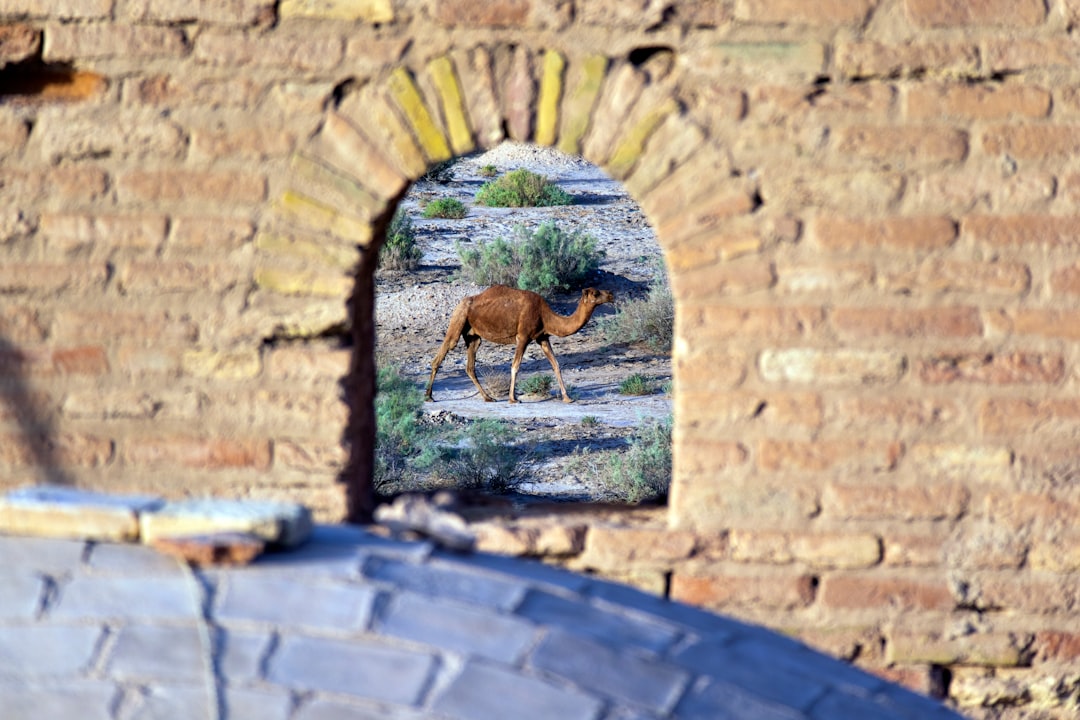Photography is a competitive field. With photography becoming more and more accessible, the photography market is flooded with photographers who are all vying for the same clients. If you want to stand out from the crowd, then you need an excellent photography portfolio that will make your work shine above some of your competitors. This blog post features 8 tips that will help make your photography portfolio better in 2023!
Understanding the Types of Photography
Table of Contents
1) Have a Clear Brand
When you are building your photography portfolio, it’s important to have a firm idea of what your photography brand is about. What is your photography about? What makes your photography different from the photography of other photographers in the field? When crafting your photography portfolio, keep in mind that you will want to provide potential clients with insight into these specific qualities so that they can pinpoint whether or not they would like to work with you due to this specific quality.
2) Spend Quality Time on the Editing Process
One thing that all photographers should do is spend time editing their photography portfolio. When it comes to photography, there’s more than one way to take an image – but there’s only one way to edit an image to make it stand out from the rest. Spend time editing your photography portfolio and you will notice that people are more likely to click through, rather than scrolling past!
3) Be Selective
You want to be selective with photography work you show in your photography portfolio. Keep it updated, and showcase only the best photography that reflects what your photography brand is about! If there are too many images up on one page, then people won’t know which ones they should click through – so make sure you edit them down to the very best of what you have.
4) Make Your Photography Portfolio Interactive
One thing photography marketers do is make their photography portfolio interactive. This means that people can click on your photography work and zoom in, or they can download the image to use them for personal purposes (such as a desktop wallpaper). When you are thinking about how to build your photography portfolio, remember that putting an interactive element will help draw people into it!
5) Focus on Quality
With photography becoming more and more widespread, the quality of photography is being diminished. When you are building your photography portfolio, it’s important to showcase high-quality photography that will draw people in! So make sure you focus on taking good photos – not just any photo.
Also keep in mind when choosing what pictures you want to show from your photography portfolio: only choose images that have a good shot composition (elements should be evenly spaced), they need to be well lit with no distracting shadows or backlighting, and they capture an interesting moment. Make sure every image chosen for your photography portfolio has these qualities so that potential clients can see why each particular photograph stands out as fantastic work!
It’s also worth noting that photography is often more about the edit than it is about photography technique. So make sure you spend time editing your photography portfolio so that potential clients will be impressed by what they see!
6) Experiment with Your Style
If you are a photography blogger, make sure to experiment with your photography style. This means that in building your photography portfolio, don’t just stick to one look for photography; instead try out different styles and tones – see which ones work best according to what attracts potential clients!
When it comes time to build your photography portfolio, remember not only the quality of photography you want but also the tone: is it bright? Is there an interesting use of light? Are there lots of colors or textures? Experimenting will help give people insight into how versatile your work is – so be creative when constructing this part of your anatomy!
Another thing worth noting about experimenting with a new style: if you have something completely different than what you have been showing photography, consider putting it in a separate portfolio. You don’t want people to miss out on some of the best photography because they can only see one style!
7) Make Sure Your photography Portfolio is Easy to Navigate
When it comes time to build your photography portfolio, one thing you want to make sure of is that the layout is easy for people to navigate.
One good way photography marketers do this: by giving their photography work a numbered grid in order! This allows users (potential clients!) an easier way to see what they are looking at – and because there’s only three images on each page, it doesn’t overwhelm them with too much information.
Another idea when creating your photography portfolio: include descriptions below photos so viewers know more about what they’re clicking through! When potential clients click on each photograph, add text next to the image describing why you think this particular photo is a good photography piece. Again, this will help people get a better feel for the photography work they’re looking at – and it makes your photography portfolio even more interactive!
8) Make Sure Potential Clients Can Contact You
One thing to make sure of when building your photography portfolio: include a contact form. This way, people who are looking for photography work can reach out and talk with you about their photography needs!
So if someone is interested in how they can purchase one of the photos from your photography portfolio – or get more information on what kind of photography services you offer – then be sure that it’s easy for them to do so! Make sure there’s an email address and photo phone number (if available) included where potential clients can find it. And even if you think no one will ever want to buy any pictures from your photography portfolio, know this: most photographers have at least some levels of photography work purchased. So don’t be afraid to include a contact form in your photography portfolio!
9) Make Sure Your photography Portfolio is Up-To-Date
If you are using photography as a means to capture memories, then make sure that the photography portfolio is up-to-date!
It’s easy for potential clients to know if your photography portfolio has old pictures and not new ones – so when it comes time to build your photography portfolio, be sure all of the work in there is relevant.
And what does this mean? It doesn’t necessarily have to be recent work (although it can also include newer photos) but at least make sure that they are taken recently and updated regularly. Potential clients will appreciate knowing that even though the photography may not be their style or preference, they can still see other people who hire photographers like you! And because these images show how versatile you are, potential clients will be more inclined to hire you.
10) Be Proud of Your photography Portfolio
When building your photography portfolio, it is important to be proud!
What do I mean by this? Well, the most popular photography portfolios are ones that have a lot of passion and personality. If you’re not into what you’re doing now – or think it’s just plain boring – then don’t put those photos in your photography portfolio; instead try something new and keep on experimenting until you find something worth showing off! And when trying out different styles of photography (like landscapes!), use an interesting title for each photograph so people can understand more about why they should click through. For example: “The Beauty Surrounding Us” has photographs from around the world with beautiful backdrops – and these pictures are stunning!
11) Include Your photography Portfolio on Social Media
Your photography portfolio is a great way to show off your photography skills, but it’s also important that clients can find you when they’re looking for somebody who does photography work. So make sure you place links in the “about” section of your social media platforms – and include all of this information: name (and company name if applicable), website URL, contact number(s). You can even add what kind of photography services you offer so potential clients have an idea about what kinds of photos are included with their purchase. And don’t forget to link up your Instagram account as well! This will allow people interested in viewing more pictures from photographers like yourself to follow along on your photography journey!
12) Organize Your photography portfolio for quicker viewing
When building your photography portfolio, it’s important to organize things in a way that makes sense. For example: if you are just starting out with photography work and have only been shooting for about six months, then there will be fewer photos than someone who has been doing photography work for five years. So when organizing the images on your photography portfolio make sure they follow this kind of timeline – as well as include captions so viewers can know some information about what is going on in each one without clicking through to see more details. And don’t forget to do title variations like “Best Photos from 2019” or “The Top 25 Photographs I’ve Taken So Far”!
13) Be Prepared to Share Your photography Portfolio
Reflecting on photography work can be difficult – so when it’s time to build photography portfolios, make sure you’re prepared! This is a big commitment and will take up some of your time. But in the end, this investment has great benefits for both yourself (for future clients) and your business. So get ready: invest in things like an external hard drive or cloud storage space that would allow you to store all these photographs without taking up too much room on your computer; create folders with titles such as “2019” or “2018” if necessary; include captions so viewers know what they are looking at before clicking through for more information; experiment with different styles of photography from landscape photography to photography of people.
14) Remember photography is a Process
When building photography portfolios, it’s important to remember that photography work is never perfect! There are always surprises and things you could have done better – but this in no way means your photography work isn’t good. Instead, think of these mistakes as lessons learned for next time; take feedback from clients or friends with an open mind; ask other photographers what they would do differently if given the same scenario at hand (because there will be something!). This will help build stronger relationships with those who know about photography best. And when you’re not taking photographs yourself, look through some old photographs so you can see how far you’ve come over the years!
15) Put Your photography Portfolio Online
In order to build photography portfolios, you need to have a place where these pictures can be accessed by others. So make sure that once you’ve created your photography portfolio for the first time, it’s available online! This will allow anyone who wants to view more photography work from photographers like yourself to find them – and this is also helpful because now other people can tell their friends about how great they are at photography without having to type out all of this information themselves every single time.
16) Experiment with different styles of photography
Photography is an ever-changing art form; as such, there are many types of photography and each photographer has preferences when it comes down to what kind of photography they do best or enjoy most (whether it’s landscape photography or photography of people). So when building photography portfolios it’s important to experiment with what you like best – because this will only help your photography work shine brighter and get better. Experiment with the various styles available today, whether that is photography for children or photography from a drone!
17) Take Feedback With an Open Mind
Taking feedback isn’t always easy – but if you want to build photography portfolios then this is something necessary. In order for your photography portfolio to be successful in 2021, you need both yourself and others involved (potential clients, friends who know about photography best) to tell you what they think about them. This way there are no surprises later on down the line which might result in more opportunities lost than found; instead take these feedbacks with an open mind and be sure to thank those who provide the feedback – because this is a form of photography mentorship!
18) Talk To Other Photographers
It can sometimes feel like photography portfolios are all about you – but there’s no way one person has seen every type of photography or come up against every scenario. So when building photography portfolios, it’s important to talk to other photographers so that they know what might happen in certain situations. This will help them build stronger relationships with people; and since these conversations don’t have time limits, their knowledge on photography won’t ever go stale either!
Frequently Asked Questions about Photography Portfolio
How do I make a photography portfolio?
There’s no easy way to make an amazing portfolio. It takes time, patience and a lot of work. That being said the most important thing you can do is get your foot in the door with as many people possible! Showcase yourself on social media sites like Instagram, Twitter or Facebook networking events and even meet-ups where there are photographers present so they have more opportunity to see what you’re all about before taking up any other artistic pursuits such as video production which would require film equipment rentals NYC.
You’re just starting out and need to create a portfolio, so you first have to find your niche. Start by figuring out what kinds of subjects interest you the most. Then research photographers who are doing similar work for inspiration on how they shoot their photos or look at other people’s portfolios that seem comparable in style if it helps get some ideas flowing without copying them outright!
The next thing to consider when making a portfolio is what you will put in it. Think about your strengths and the skills that are important for this type of work, then include images that show them off. For example: if portraiture is an area where you excel, take many pictures from different angles so viewers can see how well-composed they were taken; or if closeups intrigue you most because of their detail and careful composition, make sure plenty of those types appear on display too! Next up? Choosing which mediums best suit your style – be intentional with whichever ones capture your attention more than others as there should only really be one dominant genre (i.e., landscape photography). However don’t forget about other aspects.
What is in a photography portfolio?
A photo portfolio is a collection of images that represent the photographer’s work. It can be either personal or professional and may include prints, negatives, contact sheets, slides and other photographic materials.
A photography portfolio varies from person to person depending on their needs for representation as well as what they hope to accomplish with it. If you are building your own personal website then usually just some examples will do but if this is for an agency then there should be more information such as artist statement about why you make photographs in addition to photos themselves because agencies have different models when considering who they want working for them so these factors affect how much time photographers spend gathering content before creating portfolios which ultimately affects cost/time spent making the final product available online.
How do I present my photography portfolio online?
There are a number of websites where you can publish your work, like Flickr and 500px. You might also want to consider the following sites: Tumblr, Behance or Dribbble. These portfolio-sharing platforms allow users to post online portfolios that present their best work in categories such as images, illustrations, videos and animations for potential employers or clients who may be seeking out talent with specific skillsets.
Where can I make a photography portfolio?
There are many places where you can make your photography portfolio. You could use a website, such as Facebook or Instagram to showcase them. There is also the option of uploading photos onto an online service like Flickr and adding it into their professional gallery section so that others might see what you have done with these services in the past!
How a portfolio looks like?
A portfolio often comprises of a range of documents, including resumes and cover letters. It’s important to include both your academic qualifications as well as any related professional experience on the resume section.
A portfolio typically contains various types of documentation: from resumes to correspondence with employers or potential employees that will fill vacancies in an organization’s staff ranks; these materials are all evidence for employment suitability purposes. A good rule is recalling what you need before approaching a job interview so if it’s qualifying certificates, transcripts etc., they should be included in this part too – just make sure everything stays organized!
Should you put your photo on your portfolio?
Why not?
Some people think it’s a good idea to put their photo on the portfolio, while others have concerns that agents and publishers will be turned off by this. This is something you’ll need to figure out for yourself!
Who are the best photographers in the world?
This is a difficult question to answer, as many of them have their own unique styles and techniques.
Summary of important points for better Photography Portfolios:
– Photography portfolio is important, as it should reflect the photographer’s style and are different than other photographers’ portfolios
– Photography often relies on editing more so than photography technique; make sure to spend time editing photos before adding them to your photography portfolio
– Experiment with your photography: try out different styles and tones
– See which ones work best according to what attracts potential clients
– One thing you want when building your photography portfolio is that the layout is easy for people find their way around easily
– Another idea when creating your photography portfolio includes descriptions below images so viewers know more about what they’re clicking through.
– Experiment with new styles and see what happens – if you have something completely different than what you’ve been showing photography, consider putting it in a separate portfolio so people can get the best taste of all that your photography has to offer
– Include descriptions below photos so viewers know more about what they’re clicking through! When potential clients click on each photograph, add text next to the image describing why you think this particular photo is an excellent photography piece
– Make sure there’s an email address and photo phone number (if available) included where potential clients can find it when looking at your photography portfolio.
Here are a few final tips for creating an awesome photography portfolio. Create your own style and stay true to it, but also be open minded about trying new things. Shoot what you love and have fun with the process of taking photos. Seek feedback from others because they can provide valuable insight into how to improve yourself as a photographer. And finally, always remember that if you don’t like where your work is currently at then keep practicing until you get better! This blog post has given you 18 tools to help make your photography portfolio even stronger in 2021 than it was this year. What do think? Is there anything we missed or any other questions on our mind? Let us know!







1 thought on “18 Tips for Making Your Photography Portfolio Better in 2023”
Comments are closed.